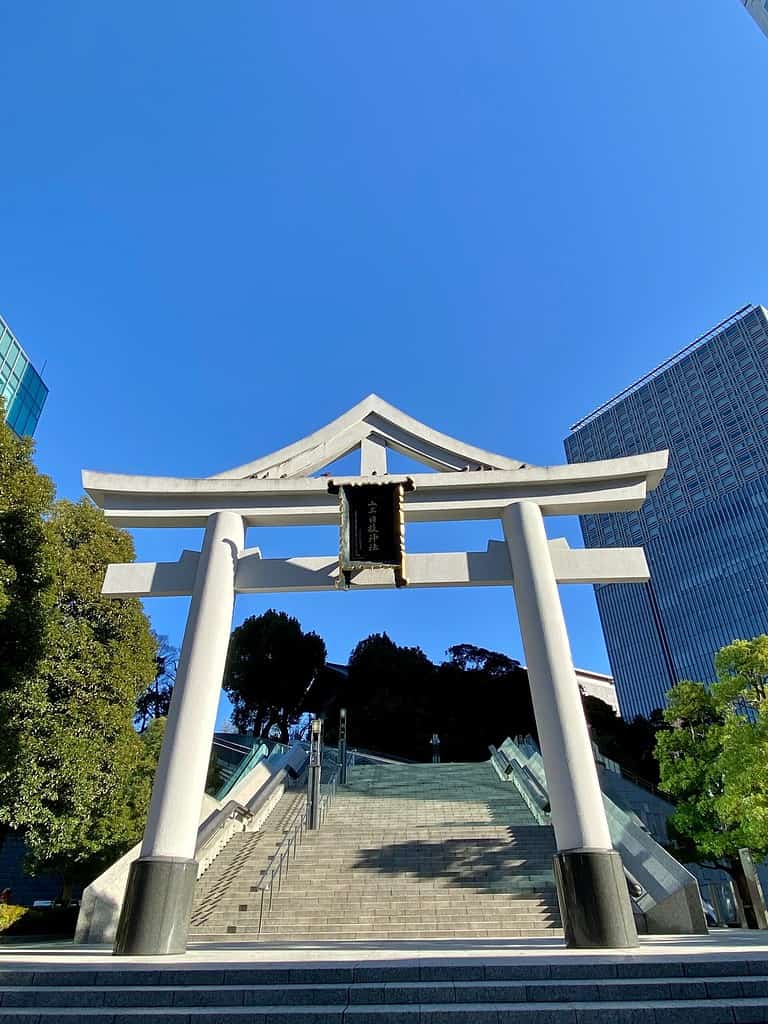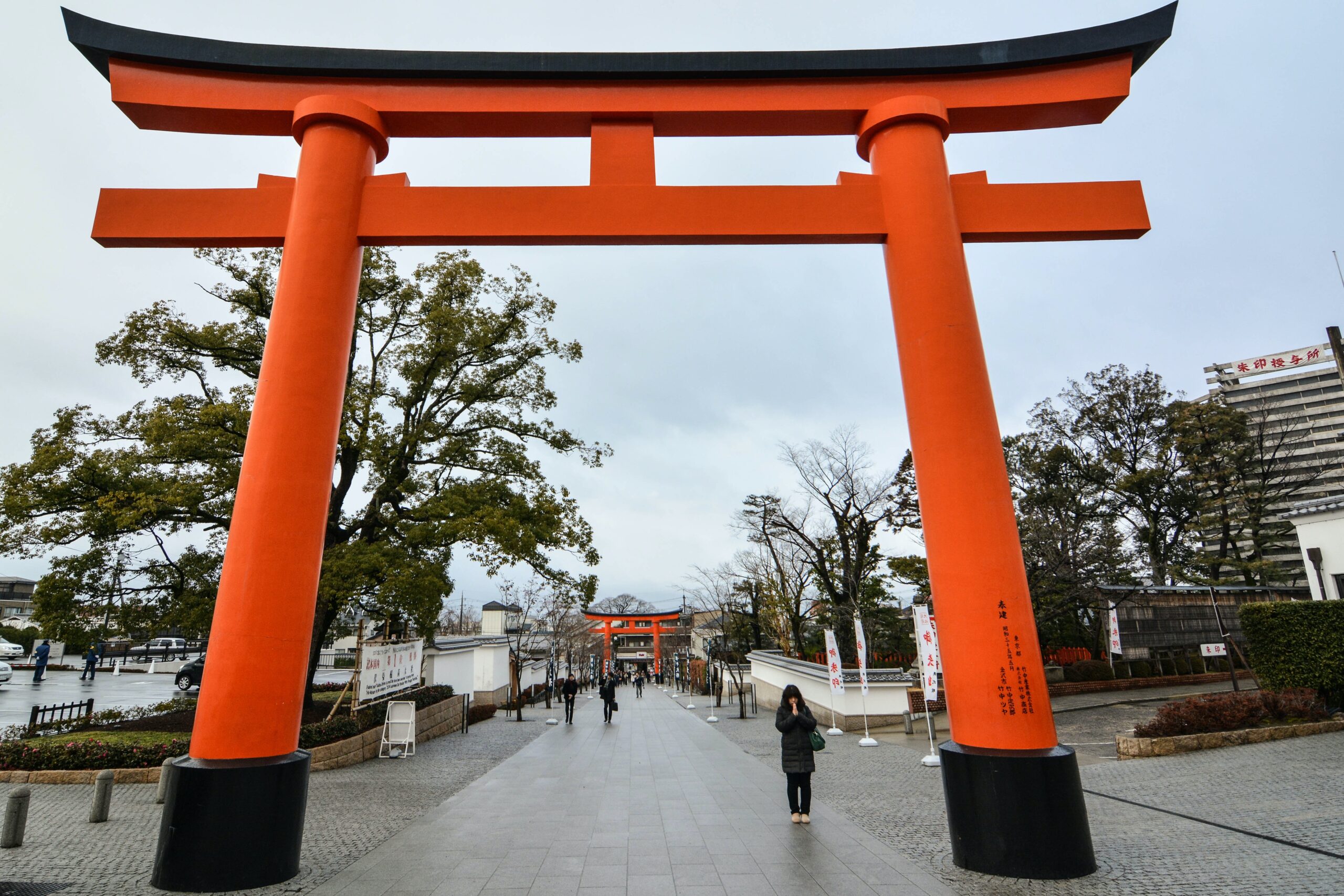Konnichiwa! A Japanese torii gate (鳥居) is an iconic structure found in Japan that marks the entrance to a sacred or holy space, such as a Shinto shrine or a Buddhist temple. It is a traditional Japanese architectural element that has been around for centuries and is an integral part of the country’s cultural heritage. The torii gate is a symbol of Japan’s rich history, culture, and spirituality, and is often associated with traditions and customs that are still observed today. In this article, we will delve into the history of the torii gate, the symbolism behind it, and the cultural significance it holds for the people of Japan.
Affiliate Disclaimer: I only recommend products I would use myself and all opinions expressed here are our own. This post may contain affiliate links that at no additional cost to you, I may earn a small commission. As an Amazon Associate I earn from qualifying purchases.
History of the Torii Gate
The origins of the torii gate can be traced back to the 10th century, during the Heian period in Japan. At that time, Shintoism was the predominant religion in Japan, and people believed that deities or kami were present in natural elements such as mountains, trees, and rivers. To mark the boundaries of these sacred sites and to indicate the presence of the kami, people began erecting wooden gates called torii, which means “bird perch” in Japanese. These gates were initially simple structures made of two pillars and a crossbar and were not painted or adorned in any way.
Over time, the design of the torii gate evolved, and more elaborate structures were built using materials such as stone and metal. In the 12th century, the founder of the Kamakura Shogunate, Minamoto no Yoritomo, erected torii gates to mark the entrance to his palace. This was a significant development, as it marked the first time that torii gates were used for non-religious purposes. In the following centuries, torii gates became increasingly ornate, and they were often used to mark the entrance to important buildings, such as schools and government offices.

Symbolism of the Torii Gate
The torii gate is a symbol of the boundary between the secular and the sacred, the profane and the divine. It is a gateway that marks the entrance to a sacred space and serves as a threshold between the human and the divine realms. The torii gate is also a symbol of the Japanese aesthetic, characterized by simplicity, elegance, and harmony with nature. It is often seen as a representation of the Japanese spirit and identity, reflecting the country’s reverence for tradition and its deep connection to the natural world.
More Colors than Red?
While the most common color for torii gates is vermillion, known as “shuiro” in Japanese, there are other colors that hold significant meanings.
Each color of the torii gates carries its own symbolism, contributing to the rich tapestry of Japanese cultural heritage and beliefs.

Cultural Significance of the Torii Gate
The torii gate is an essential part of Japanese culture and is used in various contexts, from religious ceremonies to everyday life. Here are some of the ways in which the torii gate is culturally significant in Japan:
The torii gate is most commonly associated with Shintoism, a religion that is indigenous to Japan. In Shintoism, torii gates mark the entrance to a sacred space where people can worship the kami or spirits that are believed to reside there. The torii gate is an essential element of Shinto shrines, which are places of worship and pilgrimage for the Japanese people. When people pass through the torii gate, they are entering into a sacred space where they can communicate with the divine.
The torii gate is also used as a cultural landmark in Japan. Many torii gates are located in areas of natural beauty, such as forests, mountains, and beaches, and are seen as an integral part of the landscape. Some of the most famous torii gates in Japan include the one at the entrance to the Itsukushima Shrine on Miyajima Island, which is considered one of the three most beautiful sights in Japan.
In addition to marking the entrance to a sacred space, the torii gate is also believed to provide protection and purification to those who pass through it. In Shintoism, it is believed that the torii gate acts as a barrier between the mundane world and the divine world, and passing through it purifies the individual and protects them from evil spirits. As such, torii gates are often used in purification rituals and ceremonies, such as the New Year’s Day celebrations, where people pass through a torii gate to start the year afresh.
The torii gate is not only culturally significant in Japan but also has architectural and artistic significance. The construction of a torii gate requires skilled craftsmanship, and the design of each gate is unique, reflecting the individuality of the shrine or temple it belongs to. Torii gates are often intricately carved or painted with symbols, such as the rising sun, that are associated with Japanese culture. They are also an inspiration to many Japanese artists, who have incorporated the torii gate into their paintings, sculptures, and other forms of art.

Traditions with the Torii Gate
The torii gate is associated with several traditions and customs in Japan. Here are some of the most significant ones:
The New Year’s Day celebrations in Japan are one of the most significant cultural events of the year, and the torii gate plays an important role in the festivities. On New Year’s Day, people visit Shinto shrines to pray for good fortune in the coming year. As part of the tradition, they pass through the torii gate to enter the shrine and offer their prayers.
Shichi-Go-San is a traditional Japanese festival that celebrates the growth and well-being of children. It is held on November 15th, and on this day, parents take their children to a Shinto shrine or temple to receive a blessing from the kami. As part of the ceremony, the children pass through a torii gate, symbolizing their entrance into the world of adulthood.
The torii gate is also a popular backdrop for wedding ceremonies in Japan. Many couples choose to have their wedding photos taken in front of a torii gate, as it is seen as a symbol of good luck and prosperity. In some cases, the bride and groom will pass through a torii gate during the wedding ceremony, symbolizing their entrance into a new phase of their lives.

Planning a trip to Japan?
Final Thoughts
The Japanese torii gate is a symbol of Japan’s rich cultural heritage and history. It is a representation of the boundary between the secular and the sacred, the profane and the divine. The torii gate is not only significant in religious contexts but also in everyday life, as it is used as a cultural landmark, a symbol of protection and purification, and an inspiration for artistic expression. The torii gate is a reminder of Japan’s deep connection to the natural world and its reverence for tradition and spirituality.




2 thoughts on “Japanese Torii Gate – A Symbol of Culture, History, and Spirituality”
Comments are closed.